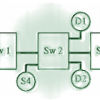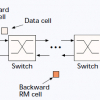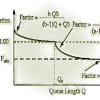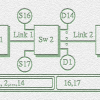Publication
The OSU scheme is a rate-based congestion avoidance scheme for ATM networks using explicit rate indication. This work was one of the first attempts to define explicit rate switch m...
Publication
The main goals of a switch scheme are high utilization, low queuing delay and fairness. To achieve high utilization the switch scheme can maintain non-zero (small) queues in steady...
Publication
This paper gives a new definition of general weighted (GW) fairness and shows how this can achieve various fairness definitions, such as those mentioned in the ATM Forum TM 4.0 spe...
Publication
We propose an explicit rate indication scheme for congestion avoidance in ATM networks. In this scheme, the network switches monitor their load on each link, determining a load fac...
Publication
Delivering congestion signals is essential to the performance of networks. Current TCP/IP networks use packet losses to signal congestion. Packet losses not only reduces TCP perfor...
Publication
In a multi-service network such as ATM, adaptive data services ( such as ABR) share the bandwidth left unused by higher priority services. The network indicates to the ABR sources ...
Publication
We develop a simulation model for the ATM ABR service, and use it to engineer ABR congestion control behavior. Although significant work has been performed on ABR rate allocation a...
101
click to vote
Publication
Efficient bandwidth allocation and low delays remain important goals, expecially in high-speed networks. Existing end-to-end congestion control schemes (such as TCP+AQM/RED) have s...
128
click to vote
Publication
Congestion remains one of the main obstacles to the Quality of Service (QoS) on the Internet. We think that a good solution to Internet congestion should optimally combine congesti...





